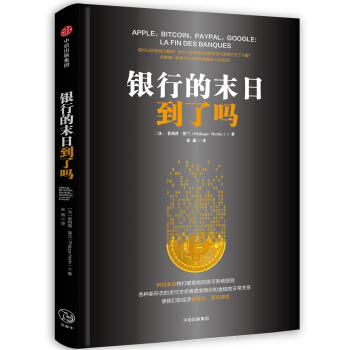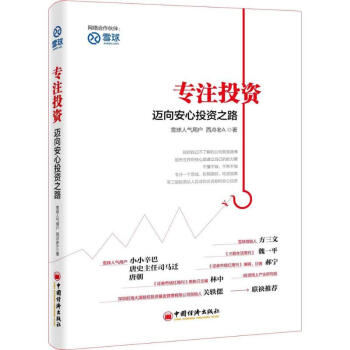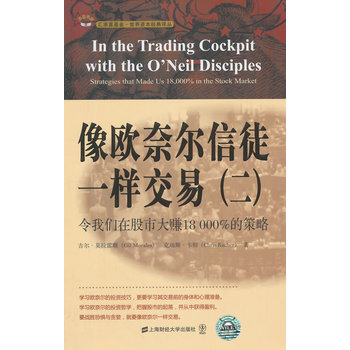![利率模型理论和实践(第2版) [Interest Rate Models - Theory and Practice:With Smile, Inflation and Credit]](https://pic.windowsfront.com/10256966/a2f6518a-d356-46e0-bc49-1df1732a0cb2.jpg)

具体描述
内容简介
《利率模型理论和实践(第2版)》是一部详细讲述利率模型的书,旨在将该领域的理论和实践联系起来,在第一版的基础上增加了许多新特征。有关LIBOR市场模型中的“Smile”部分得到了极大的丰富,已有内容扩充为几个新的章节。书中增加了瞬时相关矩阵的历史估计,局部波动动力学和随机波动模型,全面讲述了新发展较快的不确定波动率方法。跟膨胀有关的衍生品定价讲述的较为详细。读者对象:数学专业研究生、老师和经济、金融的相关人员。
内页插图
目录
PrefaceMotivation
Aims, Readership and Book Structure
Final Word and Acknowledgments
Description of Contents by Chapter
Abbreviations and Notation
Part I. BASIC DEFINITIONS AND NO ARBITRAGE
1. Definitions and Notation
1.1 The Bank Account and the Short Rate
1.2 Zero-Coupon Bonds and Spot Interest Rates
1.3 Fundamental Interest-Rate Curves
1.4 Forward Rates
1.5 Interest-Rate Swaps and Forward Swap Rates
1.6 Interest-Rate Caps/Floors and Swaptions
2. No-Arbitrage Pricing and Numeraire Change
2.1 No-Arbitrage in Continuous Time
2.2 The Change-of-Numeraire Technique
2.3 A Change of Numeraire Toolkit(Brigo & Mercurio 2001c)
2.3.1 A helpful notation: "DC"
2.4 The Choice of a Convenient Numeraire
2.5 The Forward Measure
2.6 The Fundamental Pricing Formulas
2.6.1 The Pricing of Caps and Floors
2.7 Pricing Claims with Deferred Payoffs
2.8 Pricing Claims with Multiple Payoffs
2.9 Foreign Markets and Numeraire Change
Part II. FROM SHORT RATE MODELS TO HJM
3. One-factor short-rate models
3.1 Introduction and Guided Tour
3.2 Classical Time-Homogeneous Short-Rate Models
3.2.1 The Vasicek Model
3.2.2 The Dothan Model
3.2.3 The Cox, Ingersoll and Ross (CIR) Model
3.2.4 Affine Term-Structure Models
3.2.5 The Exponential-Vasicek (EV) Model
3.3 The Hull-White Extended Vasicek Model
3.3.1 The Short-Rate Dynamics
3.3.2 Bond and Option Pricing
3.3.3 The Construction of a Trinomial Tree
3.4 Possible Extensions of the CIR Model
3.5 The Black-Karasinski Model
3.5.1 The Short-Rate Dynamics
3.5.2 The Construction of a Trinomial Tree
3.6 Volatility Structures in One-Factor Short-Rate Models
3.7 Humped-Volatility Short-Rate Models
3.8 A General Deterministic-Shift Extension
3.8.1 The Basic Assumptions
3.8.2 Fitting the Initial Term Structure of Interest Rates
3.8.3 Explicit Formulas for European Options
3.8.4 The Vasicek Case
3.9 The CIR++ Model
3.9.1 The Construction of a Trinomial Tree
3.9.2 Early Exercise Pricing via Dynamic Programming
3.9.3 The Positivity of Rates and Fitting Quality
3.9.4 Monte Carlo Simulation
3.9.5 Jump Diffusion CIR and CIR++ models (JCIR, JCIR++)
3.10 Deterministic-Shift Extension of Lognormal Models
3.11 Some Further Remarks on Derivatives Pricing
3.11.1 Pricing European Options on a Coupon-Bearing Bond
3.11.2 The Monte Carlo Simulation
3.11.3 Pricing Early-Exercise Derivatives with a Tree
3.11.4 A Fundamental Case of Early Exercise: BermudanStyle Swaptions.
3.12 Implied Cap Volatility Curves
3.12.1 The Black and Karasinski Model
3.12.2 The CIR++ Model
3.12.3 The Extended Exponential-Vasicek Model
3.13 Implied Swaption Volatility Surfaces
3.13.1 The Black and Karasinski Model
3.13.2 The Extended Exponential-Vasicek Model
3.14 An Example of Calibration to Real-Market Data Two-Factor Short-Rate Models
4.1 Introduction and Motivation
4.2 The Two-Additive-Factor Gaussian Model G2++
4.2.1 The Short-Rate Dynamics
4.2.2 The Pricing of a Zero-Coupon Bond
4.2.3 Volatility and Correlation Structures in Two-Factor Models
4.2.4 The Pricing of a European Option on a Zero-Coupon Bond
4.2.5 The Analogy with the Hull-White Two-Factor Model
4.2.6 The Construction of an Approximating Binomial Tree
4.2.7 Examples of Calibration to Real-Market Data
4.3 The Two-Additive-Factor Extended CIR/LS Model CIR2++
4.3.1 The Basic Two-Factor CIR2 Model
4 3 2 Relationship with the Longstaff and Schwartz Model (LS)
4.3.3 Forward-Measure Dynamics and Option Pricing for CIR2
4.3.4 The CIR2++ Model and Option Pricing
5. The Heath-Jarrow-Morton (HJM) Framework
5.1 The HJM Forward-Rate Dynamics
5.2 Markovianity of the Short-Rate Process
5.3 The Ritchken and Sankarasubramanian Framework
5.4 The Mercurio and Moraleda Model
Part III. MARKET MODELS
6. The LIBOR and Swap Market Models (LFM and LSM)
6.1 Introduction
6.2 Market Models: a Guided Tour.
6.3 The Lognormal Forward-LIBOR Model (LFM)
6.3.1 Some Specifications of the Instantaneous Volatility of Forward Rates
6.3.2 Forward-Rate Dynamics under Different Numeraires
6.4 Calibration of the LFM to Caps and Floors Prices
6.4.1 Piecewise-Constant Instantaneous-Volatility Structures
6.4.2 Parametric Volatility Structures
6.4.3 Cap Quotes in the Market
6.5 The Term Structure of Volatility
6.5.1 Piecewise-Constant Instantaneous Volatility Structures
6.5.2 Parametric Volatility Structures
6.6 Instantaneous Correlation and Terminal Correlation
6.7 Swaptious and the Lognormal Forward-Swap Model (LSM)
6.7.1 Swaptions Hedging
6.7.2 Cash-Settled Swaptions
6.8 Incompatibility between the LFM and the LSM
6.9 The Structure of Instantaneous Correlations
6.9.1 Some convenient full rank parameterizations
6.9.2 Reduced-rank formulations: Rebonato's angles and eigen- values zeroing
6.9.3 Reducing the angles
6.10 Monte Carlo Pricing of Swaptions with the LFM
6.11 Monte Carlo Standard Error
6.12 Monte Carlo Variance Reduction: Control Variate Estimator
6.13 Rank-One Analytical Swaption Prices
6.14 Rank-r Analytical Swaption Prices
6.15 A Simpler LFM Formula for Swaptions Volatilities
6.16 A Formula for Terminal Correlations of Forward Rates
6.17 Calibration to Swaptions Prices
6.18 Instantaneous Correlations: Inputs (Historical Estimation) or Outputs (Fitting Parameters)?
6.19 The exogenous correlation matrix
6.19.1 Historical Estimation
6.19.2 Pivot matrices
6.20 Connecting Caplet and S x 1-Swaption Volatilities
6.21 Forward and Spot Rates over Non-Standard Periods
6.21.1 Drift Interpolation
6.21.2 The Bridging Technique
7. Cases of Calibration of the LIBOR Market Model
7.1 Inputs for the First Cases
7.2 Joint Calibration with Piecewise-Constant Volatilities as in TABLE 5
7.3 Joint Calibration with Parameterized Volatilities as in Formulation 7
7.4 Exact Swaptions "Cascade" Calibration with Volatilities as in TABLE 1
7.4.1 Some Numerical Results
7.5 A Pause for Thought
7.5.1 First summary
7.5.2 An automatic fast analytical calibration of LFM to swaptions. Motivations and plan
7.6 Further Numerical Studies on the Cascade Calibration Algorithm
……
8.Monte Carlo Tests for LFM Analytical Approximations
Part Ⅳ.THE VOLATILITY SMILF
9.Including the Smile in the LFM
10.Local-Volatility Models
11.Stochasti-Volatility Models
12.Uncertain-Parameter Models
Part Ⅴ.EXAMPLES OF MARKET PAYOFFS
13.Pricing Derivatives on a Single Interest-Rate Curve
14.Pricing Derivatives on Two Interest-Rate Curves
Part Ⅵ.INFLATION
15.Pricing of Inflation-Indexed Derivatives
16.Inflation Indexed Swaps
17.Inflation-Indexed Caplets/Floorlets
18.Calibration to market data
19.Introducing Stochastic Volatility
20.Pricing Hybrids with an Inflation Component
Part Ⅶ.CREDIT
21.Introduction and Pricing under Counterparty Risk
22.Intensity Models
23.CDS Options Market Models
Part Ⅷ.APPENDICES
A.Other Interest-Rate Models
B.Pricing Equity Derivatives under Stochastic Rates
C.A Crash Intro to Stochastic Differential Equations and Poisson Processes
D.A Useful Calculation
E.A Second Useful Calculation
F.Approximating Diffusions with Trees
G.Trivia and Frequently Asked Questions
H.Talking to the Traders
References
Index
精彩书摘
In the recent years, there has been an increasing interest for hybrid structures whose payoff is based on assets belonging to different markets. Among them, derivatives with an inflation component are getting more and more popular. In this chapter, we tackle the pricing issue of a specific hybrid payoff when no smile effects are taken into account. The valuation of more general structures is to be dealt with on a case by case basis and is likely to involve numerical routines as Monte Carlo.前言/序言
Welcome onboard the second edition of this book on interest rate models, to all old and new readers. We immediately say this second edition is actually almost a new book, with four hundred fifty and more new pages on smile modeling, calibration, inflation, credit derivatives and counterparty risk.As explained in the preface of the first edition, the idea of writing this book on interest-rate modeling crossed our minds in early summer 1999. We both thought of different versions before, but it was in Banca IMI that this challenging project began materially, if not spiritually (more details are given in the trivia Appendix G). At the time we were given the task of studying
and developing financial models for the pricing and hedging of a broad range of derivatives, and we were involved in medium/long-term projects.
The first years in Banca IMI saw us writing a lot of reports and material on our activity in the bank, to the point that much of those studies ended up in the first edition of the book, printed in 2001.
In the first edition preface we described motivation, explained what kind of theory and practice we were going to address, illustrated the aim and readership of the book, together with its structure and other considerations. We do so again now, clearly updating what we wrote in 2001.
用户评价
作为一个金融工程专业的应届毕业生,我正处于从校园理论迈向金融实务的关键时期,急需一本能够系统性地梳理和深化我所学知识的书籍。《利率模型理论和实践(第2版)》这本书,它的名字本身就充满了吸引力,"理论与实践"的结合是我最看重的。虽然我还没有亲手翻阅这本书,但从我了解到的信息来看,我设想它会从金融数学的基础,例如随机过程的定义和性质,开始讲起,然后逐步深入到利率模型的核心。我期待书中能够清晰地讲解诸如Vasicek、CIR、Hull-White等模型,并且不仅仅是数学公式的堆砌,而是能够详细阐述它们的经济学意义,例如利率的均值回归特性、利率的随机波动性以及利率期限结构如何被捕捉。对我来说,最重要的就是理解这些模型是如何在实际中应用的,比如如何利用它们来为债券定价,如何进行利率风险的度量和管理,以及如何构建利率对冲策略。副标题"With Smile, Inflation and Credit"更是让我感到兴奋,这恰恰是我在学术研究中遇到的一些难题。我非常希望能在这本书中找到关于利率波动率微笑的建模方法,了解如何构建能够捕捉这种现象的模型,并且如何利用这些模型来为利率期权等衍生品定价。同时,通货膨胀和信用风险是影响利率走势的两大关键因素,我期待书中能够深入探讨如何将这些因素纳入利率模型,例如,书中是否会介绍能够同时考虑通胀和利率动态的模型,或者如何量化信用风险对利率曲线的影响。我希望这本书能够提供大量的案例研究,展示这些模型是如何在实际业务中被使用的,例如,在风险管理部门如何应用这些模型来计算VaR,或者在交易部门如何利用这些模型来发现套利机会。
评分作为一个对金融量化领域充满好奇的业余爱好者,我一直希望能找到一本既有深度又不至于太过晦涩的利率模型入门读物。《利率模型理论和实践(第2版)》这本书的名字本身就给我一种踏实的感觉,"理论与实践"的结合预示着它不会是纸上谈兵。我在网上浏览了关于这本书的一些讨论,虽然没有直接阅读,但从零散的评价和介绍中,我构建了一个大致的印象。我想象着这本书会从最基础的利率概念讲起,比如即期利率、远期利率,以及它们是如何影响债券价格和投资决策的。然后,它很可能会逐步深入到一些经典的利率模型,例如Vasicek模型、Cox-Ingersoll-Ross(CIR)模型,甚至是Black-Derman-Toy(BDT)模型。我猜想,对于每个模型,书中都会详细阐述其数学推导过程,但又不会让读者迷失在复杂的公式海洋中,而是会重点解释模型的经济学含义和在实际应用中的局限性。这一点对我来说尤为重要,因为我更关心的是这些模型如何被用来解决实际问题,比如风险管理、资产定价,甚至是期权定价。我会期待书中能够包含大量的图表和例子,通过可视化和具象化的方式来帮助我理解抽象的理论。例如,当我看到一个关于收益率曲线动态演变的图表时,我希望能立刻联想到它在不同宏观经济环境下的可能走向。此外,"With Smile, Inflation and Credit"这个副标题更是激起了我的兴趣,它暗示着这本书不仅仅停留在简单的利率模型,而是触及了更复杂的金融现实。我非常期待看到书中是如何处理利率波动率微笑(volatility smile)这个在期权定价中至关重要的问题的,以及它如何将通货膨胀和信用风险这两个影响利率的关键因素纳入模型考量。要知道,在现实世界的金融市场中,利率并不会孤立存在,它总是与通胀预期、经济增长以及借款人的信用状况紧密相连。我希望这本书能够为我揭示这些复杂因素是如何被量化和建模的,从而为我提供一个更全面的视角来理解利率市场的动态。
评分我是一名热衷于金融市场分析的独立投资者,我总是在寻找能够帮助我理解市场深层逻辑的工具和知识。《利率模型理论和实践(第2版)》这本书,单看书名就给我一种深邃而实用的感觉。虽然我还没来得及细读,但从网上流传的一些碎片信息,我仿佛已经看到了它在我书架上的模样。我猜想,这本书会从利率的基本概念入手,比如收益率曲线的形状如何反映市场对未来利率的预期,以及不同期限的债券是如何定价的。然后,它很可能会循序渐进地介绍一些经典的利率模型,比如Vasicek模型,它是不是就像一把尺子,用来衡量利率在一段时间内会如何回归到平均水平?或者CIR模型,它是不是更关注利率的非负性,就像我们生活中的利率永远不会是负数一样?我更期待的是,这本书能把这些模型与实际的投资决策联系起来。比如,当我看到收益率曲线发生变化时,这本书能否告诉我,这可能意味着什么?它是否能帮助我理解,在不同利率环境下,哪些类型的债券或者金融产品更具吸引力?副标题中的"Smile, Inflation and Credit"更是让我眼前一亮。波动率微笑,我听说过这个概念,它是不是就像期权价格的“表情”,会随着行权价和到期日的不同而变化?我希望这本书能够解释清楚,为什么会出现这种“微笑”,以及它对我们投资组合的风险有什么影响。通货膨胀和信用风险,这两个词对我来说再熟悉不过了,它们就像市场的“潜流”,时刻影响着利率的走向。我希望能在这本书中找到关于如何量化和理解这些因素在利率模型中作用的答案,比如,高通胀预期下,利率模型会如何调整?当一家公司的信用评级下降时,它的债券利率又会有怎样的变化?我期待这本书能用清晰的语言和丰富的例子,将这些复杂的金融概念变得触手可及,帮助我做出更明智的投资选择。
评分作为一名资深的金融从业者,我一直在寻找能够系统性地梳理和深化我对利率模型理解的权威著作。《利率模型理论和实践(第2版)》这本书,光是这个名字就透露出一种严谨和全面的风格,让我对接下来的阅读充满了期待。虽然我尚未亲身拜读,但通过对市场和学术界对该书的零散讨论,我构建了一个对它内容的初步认识。我预想,这本书的理论部分会非常扎实,很可能会从金融数学的最前沿理论出发,比如马丁格尔理论在无套利定价中的应用,以及伊藤微积分如何用于描述利率的随机演化。我期待书中能够详细阐述像Vasicek、CIR、Heath-Jarrow-Morton(HJM)、Libor Market Model(LMM)等一系列经典的利率模型,并且不仅仅是给出数学公式,更重要的是深入剖析这些模型的经济学含义,例如它们如何捕捉利率的均值回归、随机波动以及期限结构的变化。我尤其看重书中对这些模型局限性的批判性分析,以及如何通过模型融合和扩展来解决实际问题。副标题中的"Smile, Inflation and Credit"则是我高度关注的领域。我希望书中能够深入探讨波动率微笑的成因,并介绍各种先进的局部波动率模型和随机波动率模型,以及它们在利率期权定价、波动率交易和风险管理中的最新进展。同时,通货膨胀和信用风险是利率建模中最具挑战性的部分,我期望书中能够提供关于如何将通胀预期和信用利差纳入利率模型的严谨框架,例如,书中是否会讨论基于通胀指数挂钩债券的定价模型,或者如何利用信用衍生品来建模信用风险对利率曲线的影响。我期待书中能够包含大量的实证研究案例,展示这些模型的实际应用效果,以及如何在不同市场环境下进行模型选择和参数校准,从而为我的日常工作提供宝贵的指导。
评分作为一名在投资银行风险管理部门工作了几年的人,我对金融模型的实操性有着极高的要求。我读过不少关于利率模型的书籍,但很多都过于侧重理论推导,而忽略了模型在实际业务中的落地。这次偶然了解到《利率模型理论和实践(第2版)》这本书,从它的副标题"With Smile, Inflation and Credit"来看,它似乎正是我一直在寻找的那种能够连接理论与实践的桥梁。我尤其对书中处理"Smile"的部分感到好奇。我们知道,标准的布莱克-斯科尔斯模型假设波动率是恒定的,但这显然与现实不符,尤其是在利率期权定价中,波动率的期限结构和行权价结构(即波动率微笑)是必须考虑的因素。我期待书中能够详细介绍各种处理波动率微笑的方法,比如随机波动率模型、局部波动率模型,以及它们在实际中的优劣势。同时,"Inflation"和"Credit"的加入,也让我看到了本书的野心。在当前宏观经济环境下,通货膨胀对利率的影响举足轻重,而信用风险更是贯穿于金融市场的各个角落。我希望书中能够阐述如何将通胀预期纳入利率模型,例如通过加入通胀挂钩债券的分析,以及如何量化和管理信用风险对利率曲线的影响,例如通过信用违约互换(CDS)的定价和风险对冲。在实践层面,我更希望这本书能够提供一些具体的案例研究,展示这些模型如何在风险测量(如VaR、Expected Shortfall)、压力测试、以及资产组合优化等场景中得到应用。我设想书中可能会有大量的代码片段或者伪代码,演示如何利用Python、R等工具来实现这些模型,这对我来说将是极其宝贵的学习资源。总而言之,我期待这本书能够提供一套完整且实用的利率建模框架,帮助我更好地理解和应对复杂的金融市场风险。
评分我一直对数学在金融领域的应用非常着迷,尤其是那些能够精确描述和预测市场行为的数学模型。《利率模型理论和实践(第2版)》这本书,光是书名就让我产生了一种强烈的阅读冲动。我并没有真正翻阅过这本书,但从网上的一些零散信息,我脑海中勾勒出它的大致轮廓。我猜想,这本书很可能从最基础的随机过程理论开始,比如布朗运动,然后在此基础上构建利率模型。我期待书中能够清晰地解释各种经典利率模型的数学原理,比如Vasicek模型如何假设利率服从均值回归过程,CIR模型如何考虑利率的非负性,以及Black-Derman-Toy(BDT)模型如何通过二叉树或三叉树结构来捕捉利率期限结构和波动率的动态。更重要的是,我希望书中能够深入探讨这些模型在实际中的应用。例如,如何利用这些模型来计算债券的价格,如何进行利率风险的对冲,甚至是如何为利率衍生品进行定价。而"With Smile, Inflation and Credit"这个副标题,更是让我对这本书的深度和广度充满了期待。波动率微笑是利率衍生品定价中的一个核心难题,我迫切想知道书中是如何阐述这个问题的,是否提供了能够有效捕捉微笑的建模方法。同时,通货膨胀和信用风险是影响利率最根本的两个因素,我希望书中能够揭示如何将这两个因素纳入利率模型,例如,模型是否考虑了通胀预期对即期利率的影响,或者信用利差如何被建模并融入利率曲线的形成。我会期待书中能够包含大量的数学推导,但同时又辅以直观的解释和图示,帮助我理解这些复杂的概念。我设想,书中可能还会涉及一些高级的主题,比如蒙特卡罗模拟在利率模型中的应用,以及如何利用机器学习技术来改进利率模型的预测能力。
评分我是一个对金融市场运作原理充满好奇心的普通读者,平时喜欢通过阅读来拓展自己的视野。《利率模型理论和实践(第2版)》这本书,它的名字听起来就非常有分量,我猜想它会深入探讨利率的奥秘。虽然我还没有实际阅读过这本书,但从它吸引人的书名和副标题,我构建了一个大致的阅读预期。我设想,这本书会从最基础的概念讲起,比如什么是利率,利率是如何变化的,以及为什么利率会变。它可能会用一些生动有趣的例子来解释,比如,当我们贷款买房时,利率的高低对我们有什么影响?当央行加息时,又会发生什么?然后,我期待它会逐渐深入到一些关于利率的“模型”中。我不知道这些模型具体是什么,但我猜想它们就像是一些工具,可以帮助我们预测利率未来的走势,或者理解利率背后的一些规律。比如,书中会不会介绍一些公式,但这些公式又不会太难懂,能够让我们普通人也能理解其中的逻辑。副标题里的"Smile, Inflation and Credit"更是让我觉得这本书的内容非常贴近现实。波动率微笑,这个词听起来就很有趣,我希望书中能够解释清楚,为什么利率的波动性会有“微笑”一样的形状,它对我们的投资有什么影响?通货膨胀,这个我们每天都能感受到的东西,又是如何影响利率的?信用风险,就是借钱的人会不会还钱,这又和利率有什么关系?我希望这本书能够用通俗易懂的语言,解答这些我们生活中可能会遇到的金融问题,让我能够更好地理解金融市场,做出更明智的个人财务决策。我希望这本书不会像某些金融书籍那样,充斥着晦涩难懂的术语,而是能够真正做到“理论与实践”相结合,让我们这些非专业人士也能从中受益。
评分作为一个在学术界从事金融研究的学者,我对能够提供深刻理论洞察和严谨数学论证的著作情有独钟。《利率模型理论和实践(第2版)》这本书,从其标题来看,似乎正是这样一本能够满足我学术追求的书籍。我尚未阅读此书,但通过间接的信息,我构建了对其内容的预期。我推测,本书的理论部分会非常扎实,可能会从最前沿的随机微积分理论出发,介绍各种利率模型的数学基础,例如伊藤引理的应用,以及鞅理论在无套利定价中的作用。我期望书中能够深入分析诸如Vasicek、CIR、Ho-Lee、Hull-White等经典利率模型的数学结构、适用性以及它们的演化路径。对于每一个模型,我希望书中能够提供严谨的推导过程,并讨论它们在捕捉利率期限结构、波动率特征以及均值回归等方面的能力。更重要的是,我期待书中能够对这些模型的局限性进行批判性分析,并介绍如何通过引入更复杂的随机过程或多因素模型来克服这些局限。副标题中的"Smile, Inflation and Credit"更是极大地激发了我的研究兴趣。我希望书中能够深入探讨波动率微笑的成因,并介绍各种能够有效拟合波动率微笑的局部波动率模型、随机波动率模型,以及它们在期权定价和风险管理中的应用。同时,通货膨胀和信用风险是利率建模中不可回避的挑战,我期望书中能够介绍如何将通胀预期和信用利差纳入利率模型,例如通过引入通胀与利率的协方差,或者利用信用状态变量来描述信用风险对利率的影响。我希望书中能够提供对这些复杂模型进行实证检验的方法和结果,并讨论它们在宏观经济政策分析、资产定价和投资组合管理等领域的理论意义和实践价值。
评分作为一个对金融工程领域充满热情的学习者,我一直在努力寻找能够帮助我深入理解利率模型精髓的书籍。《利率模型理论和实践(第2版)》这本书,其书名本身就吸引了我,"理论与实践"的结合预示着它将兼具深度和实用性。我尚未阅读此书,但从零散的信息中,我能想象出它所涵盖的内容。我猜想,这本书会从基础的利率理论讲起,比如即期利率、远期利率的定义和计算,以及收益率曲线的形状所蕴含的经济信息。然后,它会逐步深入到经典的利率模型,例如Vasicek模型、CIR模型、Ho-Lee模型以及Hull-White模型,并详细介绍它们的数学推导过程和经济学含义。我特别期待书中能够详细解释这些模型是如何捕捉利率的随机性,以及它们在债券定价和风险管理中的应用。而"With Smile, Inflation and Credit"这个副标题更是让我倍感兴奋。波动率微笑是利率衍生品定价中的一个重要现象,我希望书中能够解释其成因,并介绍各种能够有效拟合波动率微笑的模型,例如局部波动率模型和随机波动率模型。此外,通货膨胀和信用风险是影响利率走势的两个关键因素,我希望书中能够深入探讨如何将这两个因素纳入利率模型,例如,是否会介绍能够同时考虑通胀和信用风险的利率模型,以及如何利用这些模型来分析利率的动态。我期待书中能够提供丰富的案例研究,展示这些模型在实际金融市场中的应用,比如如何在交易中利用模型进行定价和对冲,或者如何在风险管理中利用模型进行风险度量。我希望这本书能够帮助我建立起一套完整的利率建模知识体系,并为我未来的学术研究或职业发展打下坚实的基础。
评分我是一个对金融量化领域充满探索欲的普通读者,我对那些能够揭示市场背后数学逻辑的书籍总是充满兴趣。《利率模型理论和实践(第2版)》这本书,它的名字本身就传递出一种深入而全面的信息,我猜想它会是我探索利率世界的一扇重要窗口。我尚未翻阅此书,但从一些零散的片段中,我脑海中勾勒出了这本书的大致轮廓。我设想,这本书会从利率最基本的一些概念入手,比如什么是利率,利率是如何影响我们生活中的各种金融活动的,以及收益率曲线的各种形态所代表的意义。然后,它会逐步深入到一些关于利率的“模型”中。我理解的模型就是一种数学工具,可以帮助我们理解和预测利率的走向。我期待书中能够介绍一些经典的利率模型,比如Vasicek模型,它是不是就像一个“橡皮筋”,总想着把利率拉回某个平均水平?又或者是CIR模型,它是不是考虑了利率不能变成负数的现实?更重要的是,我希望这些模型能够与实际的金融市场紧密联系起来。比如,当我说到“波动率微笑”时,我希望书中能够用清晰易懂的方式解释,为什么利率的波动性会呈现出这种“微笑”的形状,它对我们的投资决策意味着什么?"Inflation"和"Credit"这两个词也让我非常感兴趣,因为通货膨胀和信用风险是我们每天都能感受到的,它们就像市场的“隐形推手”,时刻影响着利率的走向。我希望这本书能够告诉我,这些因素是如何被量化到利率模型中去的,它们是如何影响债券价格和利率衍生品的定价的。我期待这本书能够用丰富的例子和图表,将这些复杂的金融概念变得生动起来,让像我这样的普通读者也能领略到利率模型的魅力,并从中获得一些对实际生活有用的启示,比如如何理解银行的贷款利率变化,或者如何看待政府债券的收益率。
评分交到别人手里的时候别人很满意。干净,整洁,内容很正确
评分很厚的一本书,讲的内容很全
评分很厚一本,模型很全,要花时间好好学习了!
评分很厚一本,模型很全,要花时间好好学习了!
评分利率期限结构是一个随着金融实践不断发展和完善的研究课题,传统的理论重点研究收益率曲线形状及其形成原因,主要有预期理论假说、流动性理论和市场分割理论。现代的理论研究则是在规避利率风险,金融市场创新层出不穷的背景下展开的。为了对利率衍生品进行合理的定价,现代的理论研究重点转向定量的模型,试图运用随机数学来描述利率的随机波动,并取得了一系列的研究成果,主要包括均衡模型和无套利模型。这些模型的建立给利率衍生品定价提供了很好的理论基础,并为实践中准确把握利率的波动提供了很好的方法。
评分资金利率理论、IS-LM利率分析以及当代动态的利率模型的演变、发展过程。
评分利率变化
评分很厚一本,模型很全,要花时间好好学习了!
评分挺经典的一本书,需要慢慢看
相关图书
本站所有内容均为互联网搜索引擎提供的公开搜索信息,本站不存储任何数据与内容,任何内容与数据均与本站无关,如有需要请联系相关搜索引擎包括但不限于百度,google,bing,sogou 等,本站所有链接都为正版商品购买链接。
© 2025 windowsfront.com All Rights Reserved. 静流书站 版权所有










![富定位,穷定位:为你量身定制的低阻力财富GPS定位系统 [The Millionaire Master Plan] pdf epub mobi 电子书 下载](https://pic.windowsfront.com/11969342/576a3c3bN3f8080e4.jpg)









